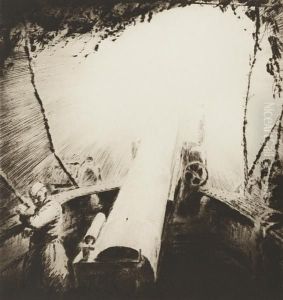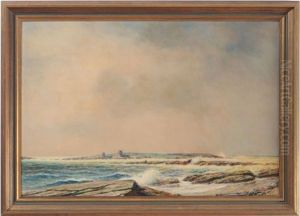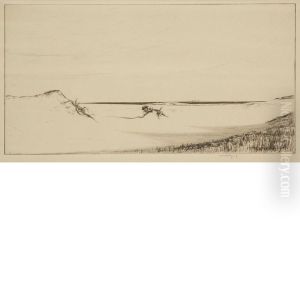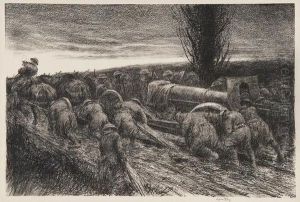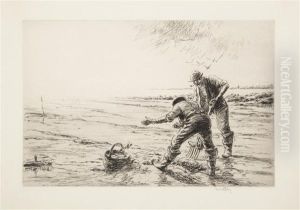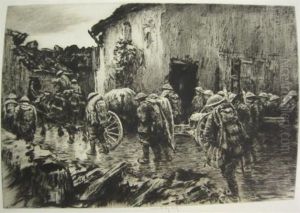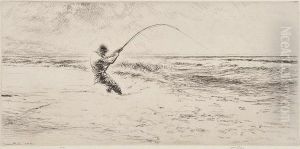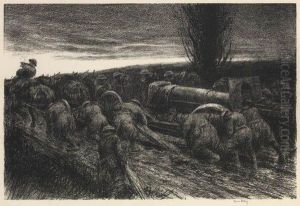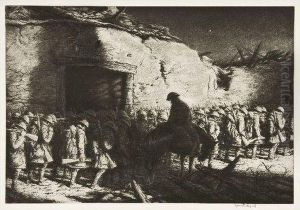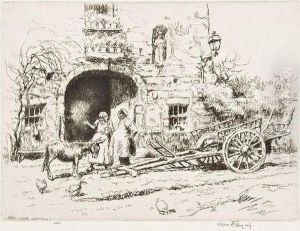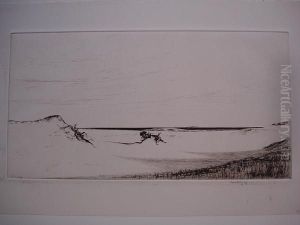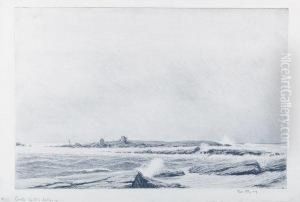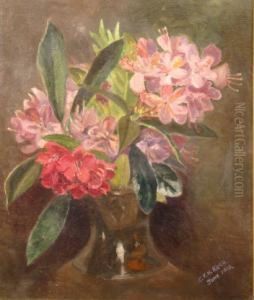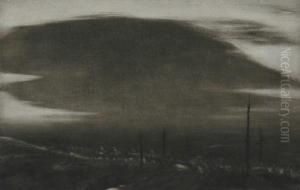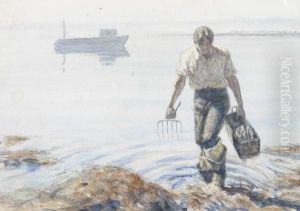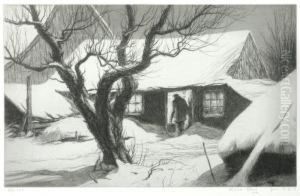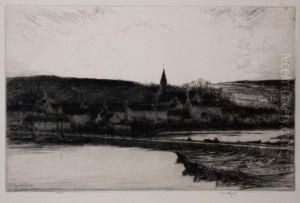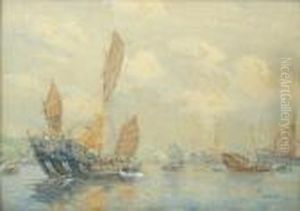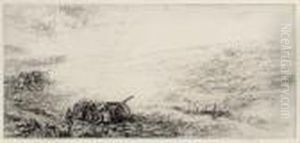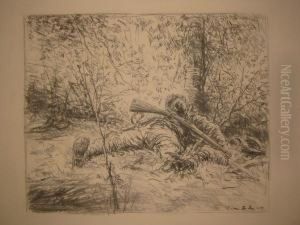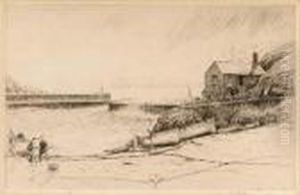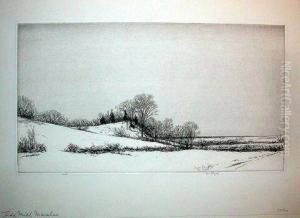Kerr Eby Paintings
Kerr Eby was a Canadian-American illustrator and printmaker known for his detailed and evocative etchings. Born on November 17, 1890, in Tokyo, Japan, to Canadian parents, Eby spent most of his childhood in Tokyo before moving to the United States in the early 20th century to pursue his artistic education. He studied at the Pratt Institute in New York and later at the Art Students League.
Eby is particularly recognized for his works depicting the horrors of war. He served as a camouflage artist during World War I, which profoundly influenced his art. The grim realities of battle and his exposure to the suffering of soldiers were reflected in his later works. After the war, Eby became a member of the Cos Cob Art Colony in Connecticut, where he developed a significant part of his artistic oeuvre.
He was an active member of the artistic community and joined the National Academy of Design as well as the Society of American Etchers, where he became known for his mastery of the etching medium. Eby's landscapes and works featuring rural scenes are also highly regarded, capturing the tranquility and beauty of the American and Canadian countryside with fine detail and a deep sense of atmosphere.
During World War II, Eby returned to military service as a war artist correspondent. The experiences of World War II further darkened his perspective, which was reflected in his later works. His commitment to depicting the reality of war without romanticism earned him both respect and distinction as an artist.
Eby struggled with health issues later in life, and his experiences during the wars continued to influence his health and well-being. Kerr Eby passed away on January 7, 1946, in Norwalk, Connecticut. His legacy is preserved through his prints, which continue to be exhibited and valued for their technical excellence and emotional depth. Eby's work remains an important contribution to the art of printmaking and the historical record of the early 20th century.
